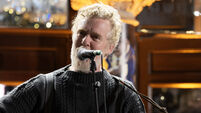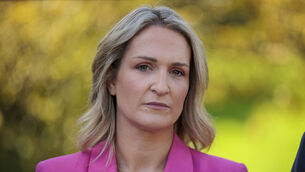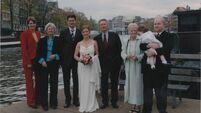War hero Barry was chief suspect in controversial murder case
TOM BARRY, hero of the War of Independence, was chief suspect in a 1933 murder case, but the gardaí were slow to question him. When they did arrest him, it led to some extraordinary developments between the secretary of the Department of Justice, the Garda Commissioner and the Deputy Commissioner.
On the night of October 28, 1933, Hugh O’Reilly, of Innishannon, near Bandon, was taken from his home and so beaten severely that he died of his injuries.













